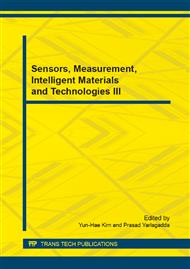p.643
p.648
p.656
p.662
p.666
p.670
p.674
p.678
p.682
Research on Facial Expression Computing in Experiment Process
Abstract:
The Candide face model and the Face Action Coding System (FACS) are introduced in the paper. The relations of the positions of feature points of Candide-3 model and the action units of FACS are studied. The application system for computing the facial expressions of students in the experiment teaching process is developed. The feasibility of the application system is demonstrated.
Info:
Periodical:
Pages:
666-669
Citation:
Online since:
March 2015
Authors:
Price:
Сopyright:
© 2015 Trans Tech Publications Ltd. All Rights Reserved
Share:
Citation:


